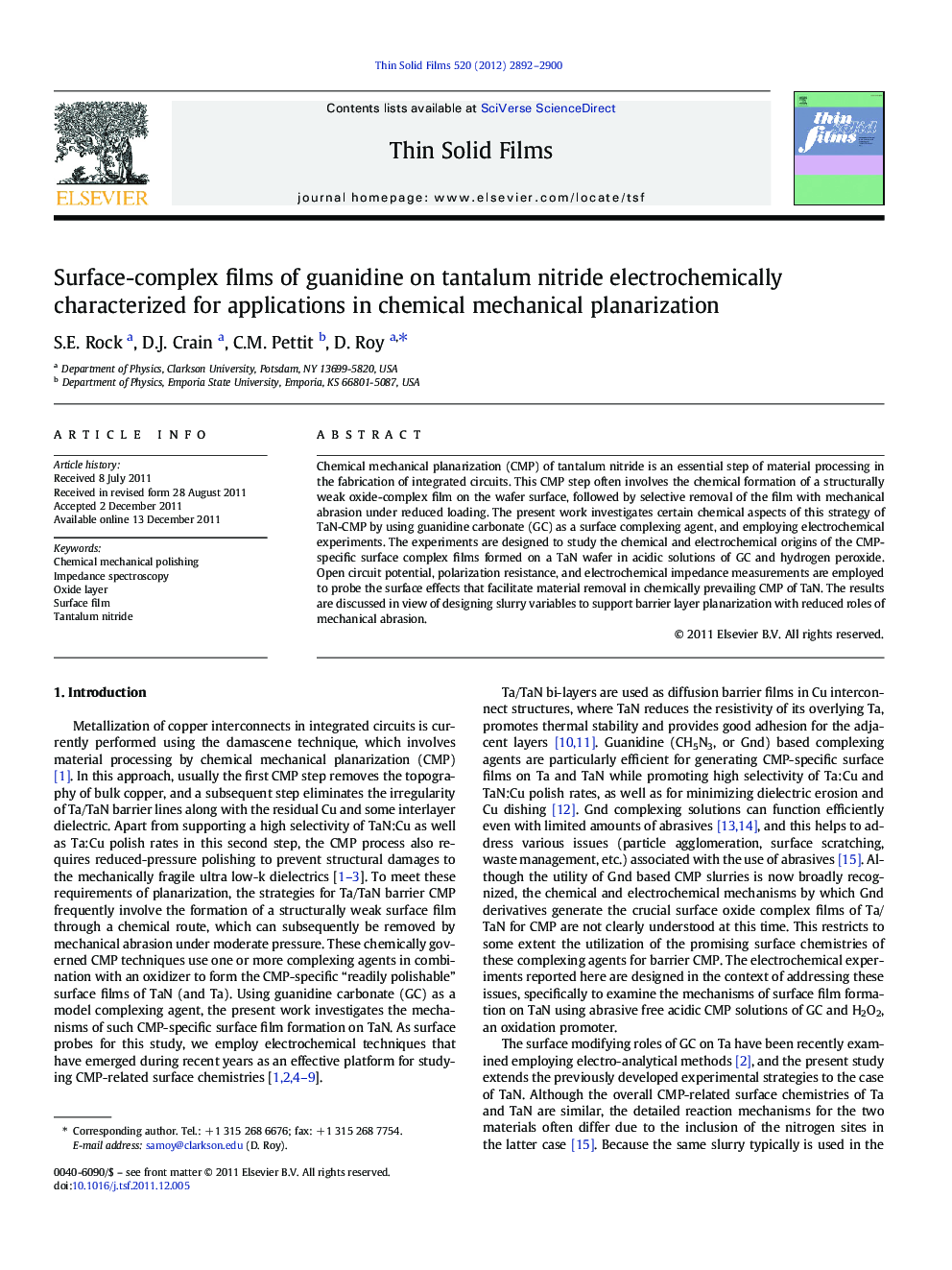| Article ID | Journal | Published Year | Pages | File Type |
|---|---|---|---|---|
| 10670109 | Thin Solid Films | 2012 | 9 Pages |
Abstract
Chemical mechanical planarization (CMP) of tantalum nitride is an essential step of material processing in the fabrication of integrated circuits. This CMP step often involves the chemical formation of a structurally weak oxide-complex film on the wafer surface, followed by selective removal of the film with mechanical abrasion under reduced loading. The present work investigates certain chemical aspects of this strategy of TaN-CMP by using guanidine carbonate (GC) as a surface complexing agent, and employing electrochemical experiments. The experiments are designed to study the chemical and electrochemical origins of the CMP-specific surface complex films formed on a TaN wafer in acidic solutions of GC and hydrogen peroxide. Open circuit potential, polarization resistance, and electrochemical impedance measurements are employed to probe the surface effects that facilitate material removal in chemically prevailing CMP of TaN. The results are discussed in view of designing slurry variables to support barrier layer planarization with reduced roles of mechanical abrasion.
Related Topics
Physical Sciences and Engineering
Materials Science
Nanotechnology
Authors
S.E. Rock, D.J. Crain, C.M. Pettit, D. Roy,
